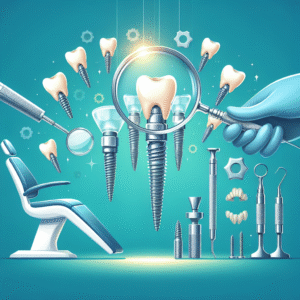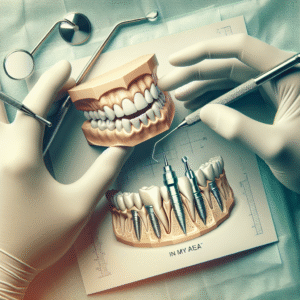All-on-4 Dental Implant Procedure Techniques
The All-on-4 dental implant procedure is a revolutionary approach to full-arch tooth replacement, offering patients a stable, long-term solution with minimal downtime. This technique is particularly beneficial for individuals who have lost most or all of their teeth and seek a permanent alternative to traditional dentures. By strategically placing four dental implants per arch, the All-on-4 method provides a secure foundation for full-arch dental implants, often allowing for teeth-in-a-day / same-day implants.
In this comprehensive guide, we will explore the techniques involved in the All-on-4 procedure, including the use of implant-supported dentures, zygomatic implants, and bone grafting for dental implants when necessary.
Understanding the All-on-4 Concept
The All-on-4 technique was developed to maximize the use of available bone, reducing the need for extensive surgical procedures like bone grafts. By tilting the posterior implants at an angle, dentists can avoid areas with low bone density, such as the sinus cavities in the upper jaw or the nerve canals in the lower jaw. This innovative approach allows for immediate function, meaning patients can leave the dental office with a fully restored smile on the same day as surgery.
Key Benefits of All-on-4 Implants
- Fewer Implants Required – Unlike traditional methods that may require six to eight implants per arch, All-on-4 uses just four, reducing surgical complexity.
- Immediate Loading – Many patients qualify for teeth-in-a-day / same-day implants, receiving a temporary prosthesis immediately after surgery.
- Bone Preservation – The angled placement stimulates bone growth, preventing further deterioration.
- Cost-Effective – Fewer implants and reduced need for bone grafting for dental implants lower overall treatment costs.
Step-by-Step All-on-4 Procedure
1. Initial Consultation and Planning
The process begins with a thorough examination, including 3D imaging (CBCT scans) to assess bone density and anatomical structures. This step helps determine whether a patient is a candidate for standard All-on-4 or if zygomatic implants (for severely atrophied upper jaws) are needed.
2. Surgical Placement of Implants
Under sedation or local anesthesia, four titanium implants are placed per arch:
- Two anterior implants are positioned vertically.
- Two posterior implants are angled between 30-45 degrees to maximize contact with available bone.
If bone volume is insufficient, bone grafting for dental implants may be performed beforehand, though All-on-4 often eliminates this need.
3. Attachment of Temporary Prosthesis
After implant placement, a pre-fabricated implant-supported denture is secured, allowing patients to leave with functional teeth the same day.
4. Healing and Final Restoration
Over the next few months, osseointegration occurs—where the implants fuse with the jawbone. Once healed, a custom, permanent prosthesis is attached for optimal aesthetics and function.
Advanced Techniques in All-on-4
Zygomatic Implants for Severe Bone Loss
Patients with extreme bone loss in the upper jaw may not qualify for traditional implants. In such cases, zygomatic implants are an alternative. These longer implants anchor into the zygomatic (cheek) bone rather than the maxilla, bypassing areas of insufficient bone.
Bone Grafting for Dental Implants When Necessary
While All-on-4 minimizes the need for grafts, some patients still require minor augmentation to ensure implant stability. Techniques include:
- Sinus lifts (for upper jaw procedures)
- Ridge augmentation (to rebuild atrophied bone)
Implant-Supported Dentures vs. Traditional Dentures
Unlike removable dentures, implant-supported dentures in the All-on-4 system are fixed, eliminating slippage and discomfort. They also improve chewing efficiency and speech clarity.
Recovery and Aftercare
Post-procedure care is critical for success:
- Diet: Stick to soft foods initially, gradually reintroducing harder items
- Oral Hygiene: Use specialized brushes and antimicrobial rinses to maintain implant health
- Follow-Up Visits: Regular check-ups ensure proper healing and prosthesis fit
Conclusion
The All-on-4 dental implant procedure is a game-changer in restorative dentistry, offering a streamlined, efficient solution for full-arch dental implants. With options like teeth-in-a-day / same-day implants, zygomatic implants, and minimized reliance on bone grafting for dental implants, patients can achieve a natural-looking, fully functional smile in less time than traditional methods.
If you’re considering implant-supported dentures, consult with a qualified implant specialist to determine if All-on-4 is the right choice for your dental needs.
Frequently Asked Questions
FAQ: All-on-4 Dental Implant Procedure Techniques
1. What is the All-on-4 dental implant procedure?
The All-on-4 dental implant procedure is a technique where a full arch of teeth is supported by just four strategically placed dental implants. This method provides a secure and permanent solution for replacing missing teeth.
2. How long does the All-on-4 procedure take?
The procedure typically takes one to two appointments, with the entire process—including implant placement and attaching the prosthetic teeth—completed within a few days. Some patients may receive temporary teeth on the same day as surgery.
3. Is the All-on-4 procedure painful?
Patients are given anesthesia during the procedure, so they experience little to no pain. Post-surgery discomfort is usually mild and can be managed with prescribed or over-the-counter pain medication.
4. Who is a good candidate for All-on-4 implants?
Ideal candidates are those with significant tooth loss or decay, healthy gums, and sufficient jawbone density. Even patients with some bone loss may qualify, as the angled implant placement often avoids the need for bone grafting.




